Like many of my age group, I grew up a Dragon Ball Z fan. After the Buu Saga though, I started losing interest in DBZ. However, the Dragon Ball Super series got me back into the Dragon Ball mind frame. As a result, I became fairly interested in this game, as soon as it was announced. Teaming up the fighting engine from Arc System Works along with an actual recognizable franchise (sorry Guilty Gear fans) makes this a real slam dunk of a game. And in almost every respect, it lives up to that. Although, it has some truly baffling things happening on the sidelines that are rather mind-boggling.
Dragon Ball FighterZ Review
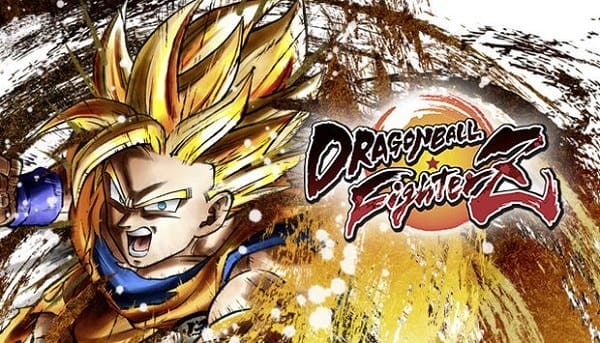
Title: Dragon Ball Fighter Z
Platform: PS4 [Reviewed], PC, Xbox One
Genre: Fighting Game
Developer: Arc System Works
Publisher: Bandai Namco Entertainment
Players: 1-2 (online, local multiplayer)
Release Date: January 26, 2018
Price: $59.99
Controls
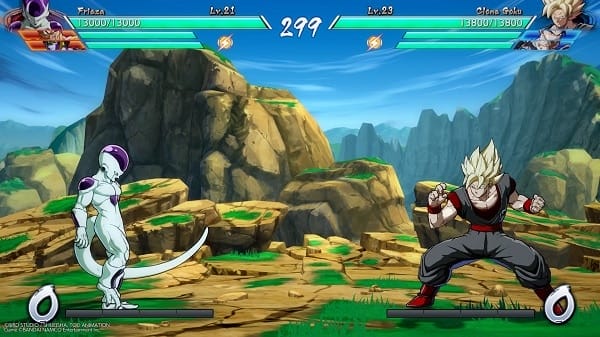
Dragon Ball FighterZ (DBFZ) is a 3 on 3 team-based fighter, very much akin to other games in the genre. Most notably the Marvel vs. Capcom series. You have four main attack buttons, weak, medium and strong attacks. While a fourth button is used for your Ki blasts, and other beam-type special attacks. R1 uses a Dragon Rush, which lets you dash for a few steps and hit someone. If successful, you go into a quick succession of attacks with you hitting the other fighter in the air and chasing them to continue the combo.
R2 lets you quickly dash toward the enemy. L1 and L2 are used to either bring your other teammates in for a quick attack or to let you swap places with them. There are even two different super attacks, one costing one bar on the meter, and the other costing three bars, which leads to a more flashy/powerful attack, called the Meteor Attack. You also have a mechanic called Sparking Blast which is analogous to the X-Factor in MvsC 3. If you press R1 and R2 together, you’ll enter a state where you do more damage and regenerate health much quicker. With this special state lasting longer or shorter, depending on how many characters remain on your squad.
Drawing Another Comparison
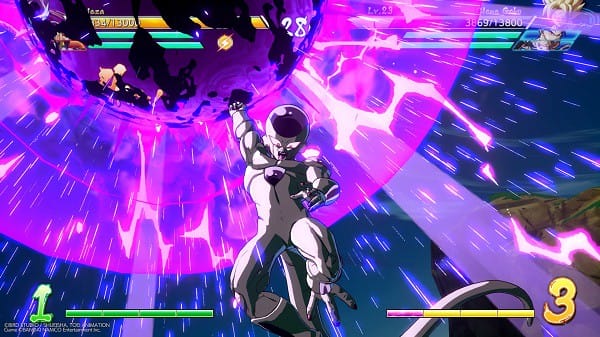
Superficially, the lineage between DBFZ and Marvel seems fairly apt. Although I’d say it has more in common with another of Arc’s previous games Persona 4 Arena than any other fighter. This is primarily due to how actual combat occurs.
In Persona 4 Arena, there’s a mechanic, which creates an auto-combo for new players. If you just kept mashing the square button, your character would automatically do a flashy, multi-hit combo. Dealing some decent-sized damage to your enemy in the process. In Persona 4 Arena, this was only for the square button, but in DBFZ this happens with square, triangle and circle. However, the combos aren’t as damaging as if you do attacks manually. But it does help keep new players engaged because they can perform cool moves without much effort.
Honestly, the fighting engine in this game is top-notch. It is insanely quick, fun, and flashy (almost overwhelming so in spots). Everything looks superb though, and there is a lot of hidden depth to the battle system, once you really get into it.
Examining the Roster

The roster for DBFZ is pretty interesting. Featuring a mix of old and new characters. Obvious characters like Goku, Vegeta, Frieza, and Cell are all here. While also including slightly more obscure characters like Nappa, Yamcha and Tien as well. The roster has around 20 characters, with three other secret characters you can unlock. With each character playing slightly different enough.
Probably the weirdest characters are Majin Buu or Captain Ginyu. Buu doesn’t really have a beam-type attack at all. Instead, he performs a fart-like attack to damage enemies or he throws a chunk of himself at other players, which restrains them for a few seconds. Ginyu, of course, calls in the Ginyu force to do most of his special attacks. As well as body-swapping for his bigger super move.
Sticking to the Lore

There are also some specific aspects of the Dragon Ball cannon that are represented well in the game. While others are missing completely. For example, the Ki Blast is handled well. Different characters have vastly different Ki Blasts. Vegeta can rapidly fire them in quick succession. Then, you have someone like Yamcha or Nappa who can barely throw one at all. You can also charge up your power in order to quickly boost the super meter. In addition, there’s a Vanish move, which teleports you behind the other fighter for a quick attack, costing one level of meter. All these are great examples of sticking close to the source material.
One extremely unique mechanic is the actual Dragon Balls, which I don’t think have been in prior DBZ games, or at least the ones I’ve played. As you do super attacks and combos, Dragon Balls occasionally fly out and fill a meter on the bottom of the screen. Once all seven are collected, and if you have a completely maxed super bar, you do one more combo and Shenron the dragon appears. Giving you a choice between four wishes.
These are: revive a fallen team-mate. Give yourself more power (another Sparking Blast). Restore some character health, or “make me immortal”, which I think reduces damage, but the game isn’t quite clear on this one.
Missing Features

On the flip side, there are no real transformations in this game at all. Save one character (where it doesn’t amount to much.) You won’t start off as regular Goku then power up through his litany of Super Saiyan forms, or god forms that he learns later on. You only have Super Saiyan Goku available, although one of his god forms is playable as a separate character.
Flying is also missing, but really, that’s a good thing. Flying in past Dragon Ball Z games has always been really awkward. Especially, once the series moved to the 3D realm. Even in the 2D games, flying was “passable”, but never really felt enjoyable. This game ditches it completely, and it works way better for it.
Story Introduction
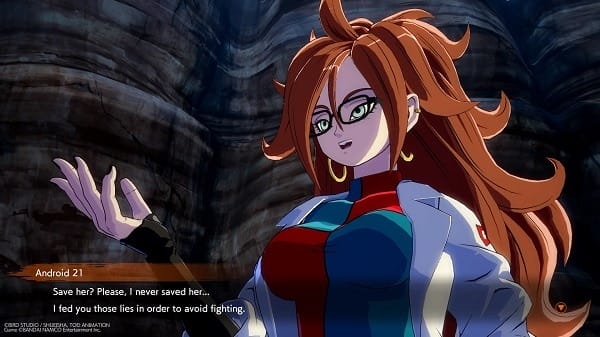
The story mode contains three different story arcs. The first has you playing the heroes. While the second goes through the “villains.” And the last arc features the true villains. Dragon Ball FighterZ introduces a new character, Android 21, as the main bad guy and she is great. She is a cross between a somewhat petulant android and a Majin Buu-esque figure. Who turns people into candy to eat them and gain their power. She is a great addition to the franchise and I hope that once Dragon Ball Super ends its current “Universe Survival” arc, they can incorporate her into the anime as well.
There’s also another subplot to the story in DBFZ as well. The main characters have to be linked with a human soul to actually fight correctly. There are apparent waves that are weakening the characters. So linking with a human helps them function in a greater capacity. Oh, and a bunch of random clones appear quite a lot too.
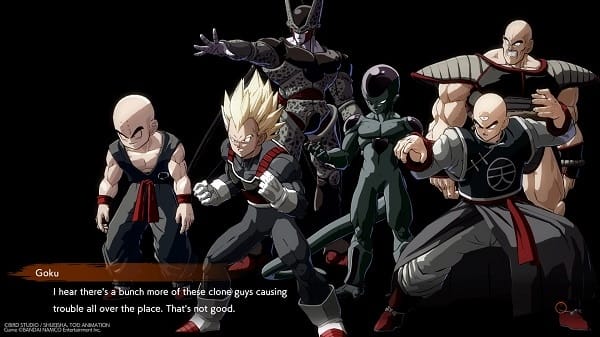
The Actual Story Mode
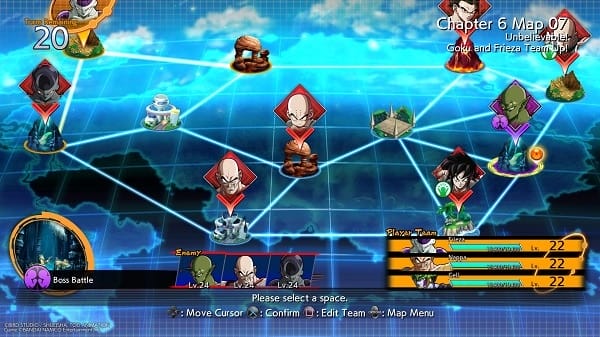
The Story mode places you on a game board, with different nodes for you to move through and fight. Your fighters each have levels, and you can form a team based on the number of fighters you have available. These nodes have enemy fighters for you to tackle, and if you are victorious you gain Zenny (money), experience, and some health is regenerated as well. You also gain skills, which you can slot into your squad. Giving you different status effects like more attack power, health regeneration, lowering enemy team levels, and so on. There is also a nasty turn limit on every level. Typically, a level has 20 turns or so, and each time you move on the board is a turn. If the turn limit expires, then it is game over.
There are a ton of story maps for you to progress through. During these maps, you will 95% of the time fight clones of the other characters. While only occasionally fighting the “real” characters. These mainly occur at the end-of-level boss battles. Occasionally, if you have the right team, there may be some pre-fight banter between specific fighters, (the Gotenks/adult Gohan one is great), but most of the time you just move through the maps fighting endless Goku or Krillin clones and not really caring at all.
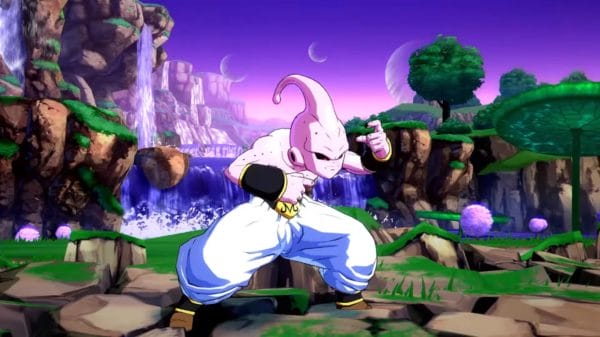
Sometimes an evil version of Kid Buu appears on the board as well. He replaces a current enemy node, which forces you into a fight with him. He also automatically levels up after you move, which creates a bit of a risk/reward system. You can usually just go right to him and fight, but he won’t be as strong. Thus, you won’t get as much experience points from the fight. If you wait around a while, Buu grows a lot stronger, so you can gain more experience. Although, this also means you have a greater chance of losing to him. So, you have to be aware of that.
Some Issues
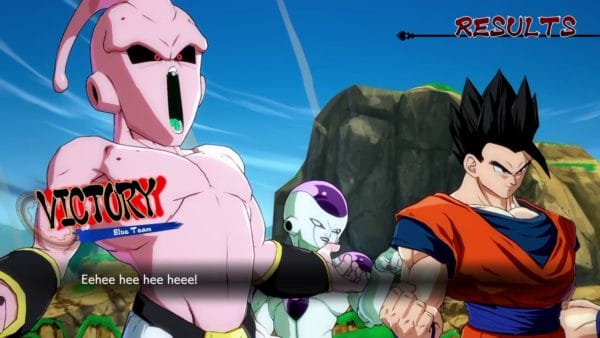
I’m really not too keen on the structure of the story mode. Quite frankly, it is a slight negative for me. Compared to past Arc Systems Games, there’s at least fighting in the story, something Guilty Gear Xrd was missing. But DBFZ has maybe WAY too much fighting. The various levels are filled to the brim with the cloned characters. Making the story mode extremely tedious after a while.
Alongside this, I don’t get the experience system at all. I was perpetually under-leveled throughout the hero campaign, and it didn’t seem to really matter. Levels seem to just mask difficulty sliders, in a sense, but I wish it was clearer. I had a level 18 Goku, level 18 Vegeta, and level 17 Gotenks and managed to win the first story arc by fighting against a level 35 Android 21.
Given the huge level disparity, you may think it’s ok to just stick with your favorite core three fighters. However, as you go through fights, they can become more and more damaged. Some of it does regenerate when it’s over, but if you are really hurting, it doesn’t go back to 100%. This has you needing to occasionally swap out your higher-leveled characters for weaker ones, and hoping for the best. You would think the game might want you to grind for levels, but because of the XCOM-like turn limit, you really can’t afford to screw around that much.
Going Online
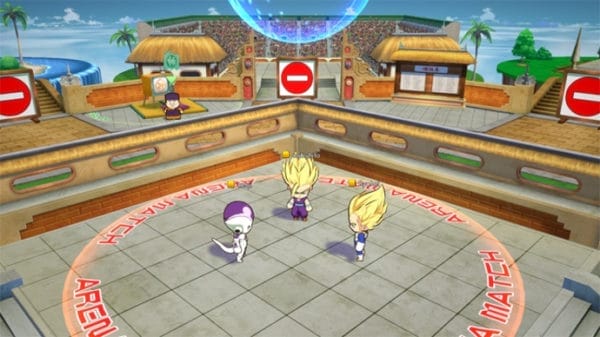
Dragon Ball FighterZ has all the other modes you’d expect in a fighting game. Training mode, arcade, and online. When you start the game, you are launched into this lobby system that has everything around you that you can walk (or teleport to) with your avatar. Most modes are fairly self-explanatory, save for online.
In online, you can do ranked and casual play, which is the norm. However, to fight against a specific player, say a friend, you have to create a special “ring” lobby, which the game doesn’t really explain at all. Once the lobby is created, then your friend can join and do battle. Although it still feels kind of cumbersome in practice.
Shops
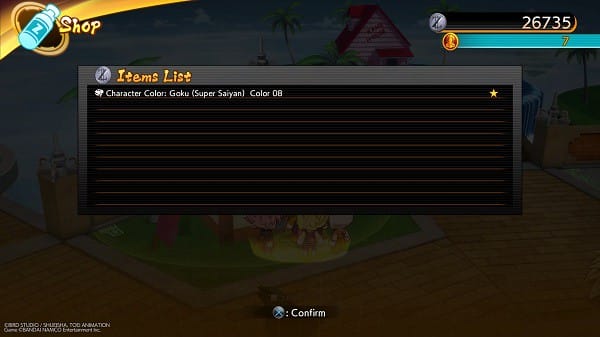
The last thing to touch on is the in-game store. This is very reminiscent of the fishing mini-game from Guilty Gear Xrd. You basically plunk down Zenny (which you gain from fighting/doing quests), which you can use to randomly unlock character colors, avatar costumes/characters, Z-stamps (stamps to use in chat), and other stuff. It’s very inconsequential but does provide for some fun in customizing your lobby avatar.
Pros:
- The fighting engine is superb
- The game looks and sounds great
- There is plenty of fan service and the new character is good
Cons:
- The story is almost all about clones, which is awful
- Networking system is a bit of a mess
- Unlocking new characters can be a real pain
Final Rating
Overall Score: 9.0 Out of 10. Despite some odd story and online structure problems, Dragon Ball FighterZ is a superb fighting game. And likely the best game in the entire 30-year history of the franchise. It’s incredibly approachable but also belies a hidden strategy that can be key to survival. It also looks fantastic and is better than the source material. If you’re a Dragon Ball fan, you probably already own this. But for anyone just looking for a great fighting game, this is certainly worth a purchase.
This game was reviewed using a digital code provided by the publisher Bandai Namco.
